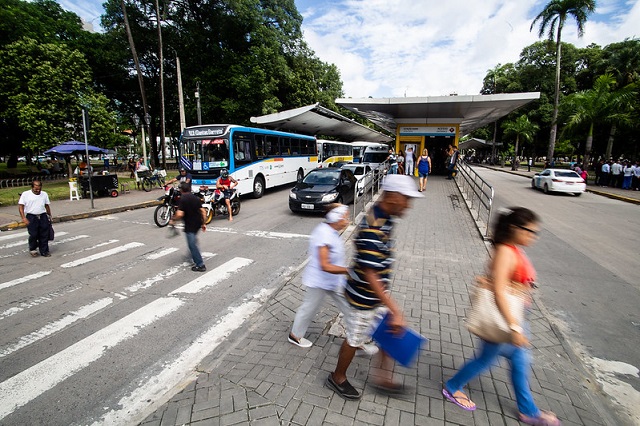
In the global conversation around decarbonizing transport, the spotlight on electric vehicles has never shone brighter. The EV revolution is underway, with consumers embracing them in record numbers and manufacturing ramping up around the world.
And yet, electric vehicles will not solve the problem alone. The 13 million electric vehicles in the world today account for just 1% of passenger vehicles.
But even if all cars were shifted to electric to limit climate impact, the structural problems of car-centric infrastructure would persist: deaths and injuries from road crashes; unequal access to jobs, markets, education, and health services; and poor system resilience. If we don’t fundamentally change how we move people and goods, the world is on its way to 2 billion cars by 2050 and a 60% increase in transport emissions, which is simply unsustainable.
To create tomorrow’s transport systems, we must build on the momentum around electric vehicles and aim even higher, for a world where cities are compact and connected, and buses and public transportation are preferred over private cars.
Next Generation of Transport
In many ways, developing countries are well-positioned to create the next generation of transport systems. Walking, public transport and cycling are already ingrained into the cultural fabric of many fast-growing, developing-world cities. The question is how to ensure these habits persist, even if private cars become affordable and feasible.
By designing transport systems for people, not cars, developing nations may “leapfrog” the mistakes of many wealthy countries and avoid a “motorization trap.”
Public buses can go a long way toward improving equitable access to opportunity for more people while reducing emissions, even more so if they are electric. WRI is working with partners in more than 20 cities around the world to provide technical assistance and other aid to introduce electric buses.
The World Bank is working on a pipeline of bus rapid transit systems (BRTs) to get private cars off the road, reduce emissions and connect large numbers of people with opportunities safely and efficiently. In Dakar, Senegal, a World Bank-supported BRT line – likely to be electric – will serve 320,000 passengers a day and cut commuting time in half. Similar projects are being constructed in cities like Dar es Salaam, Abidjan, São Paulo and Karachi.
The COVID-19 pandemic has brought new perspective on the advantages of walking and cycling. Since March 2020, over 200 cities have launched more than 400 bicycle and pedestrian interventions. Active transport infrastructure has relatively low capital requirements, and every $1 million spent can potentially create 15 to 28 jobs compared to just eight for new roads.
Safe, high-quality bike lanes and sidewalks lead to greater employment opportunities, enliven local retail and promote healthier, emissions-free transport. This is why WRI and the World Bank are working with cities like Addis Ababa, Bangalore, Buenos Aires, Delhi and Lima to retrofit thousands of kilometers of roads to be safer for cyclists.
In places as diverse as Ouagadougou and Ho Chi Minh City, two-wheeled vehicles dominate urban mobility. There is significant opportunity to improve their safety, reduce their climate impact, and bring costs down through electrification. One study shows that for consumers in Kenya, an electric two-wheeler costs less long-term than a gas-powered option. People seem to be catching on: there are around 900 million two- and three-wheelers on the road today compared to just half a million in 2013.
If these efforts expand, today’s developing countries could become models for sustainable transport infrastructure, showing how to provide more opportunity to more people without harming the health of people and planet.
Value of the Opportunity
The past two years have underscored that transport systems are critical to growth and recovery. The next generation of transport systems must be not just climate-friendly but also resilient, inclusive, safe and reliable. These changes can provide long-term dividends: in six of the world’s major emerging economies, investing in a shift to public transport would require around $173 billion but yield savings in energy and materials worth $3.35 trillion by 2050.
For developing countries, the importance of innovative thinking and new solutions in transport cannot be overstated. The opportunity exists to change the way we move. As the world looks to COVID recovery, now is the time to reimagine transport to create jobs, promote economic development, improve health and bolster equal access to opportunities.
At Transforming Transportation 2022, the World Bank and World Resources Institute will convene global leaders in the transport sector to explore a variety of solutions and what a comprehensive approach to sustainable mobility looks like. Register to attend the all-virtual conference on February 16 and 17, 2022.
This article was originally posted on Thomson Reuters Foundation News.
Ani Dasgupta is President & CEO of World Resources Institute.
Riccardo Puliti is Vice President for Infrastructure at the World Bank.






